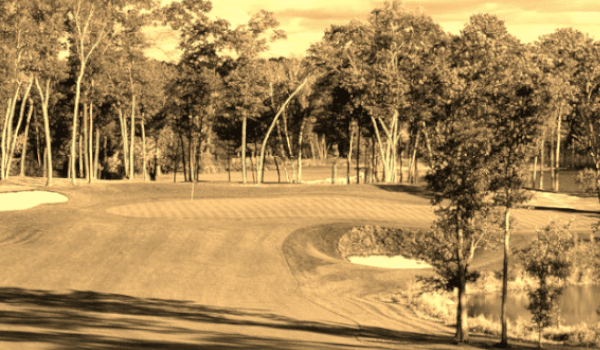
Swing Revival Without Reverse C – Is It Possible to Achieve?
The old-timer golf swing with its effortless power and smoothness was developed during the 1940-1970s. I call this golf’s golden age and if you in a time warp experiment could place the old champions on tour today I’m certain they would dominate the fields. It partly disappeared in its purity due to the reverse c problematics.
Sure, that’s a highly subjective opinion but it’s what I base my complete workings on: understanding and fundamentally reviving the great swing of the past. My sincere opinion is that modern golf is severely overtaught and that the code was cracked back then. In this article you can read about the death of the swinging motion whilst the below is focused on how you can revive the swing without the “bad stuff”.
For reader context: this article is a part of the Forgotten Master Moves Swing Page (my system for teaching the great’s core movements). I recommend that you start here instead.
Short Reverse C Recap
Somewhere in the 60-70s many players started leaning exaggeratedly away (with induced secondary axis tilt) from the target to make their swinging motion more competitive. This was likely an effect of the generic swing advice “drag with the left and hit with the right” together with the development of equipment that “allowed” manipulation of the natural swing plane for the sake of power or control. To get technical: It became possible to push your trail hand towards the target and overpower the ball this way. This is actually a steepening element and the perfect matching response? The Reverse C.
Another influence of the position was the instruction to “keep the head still”. Either way, the Reverse C was a “problem” and eventually a bolt in the beautiful swinging motion’s coffin.
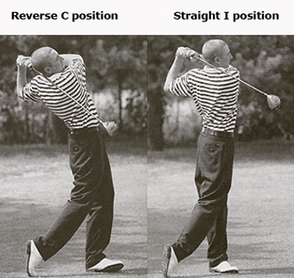
Non Reverse C Players – Showing Possibilities
Sam Snead, Ben Hogan, Bobby Jones, Peter Thompson and Walter Hagen (to name a few) all performed perfectly flowy, beautiful golf swings without the exaggerated Reverse C motion. What differentiates these players from e.g. the 1980s standard swing is less a aggressive and more flowy where the power culmination was a product of technique rather than forced manipulation.
It becomes quite evident that you don’t need a Reverse C finish to make use of the inner intentions of a flowy golf swing.
No Need for the Reverse C?
If you know a bit about hand dominance and the ability to use this dominance in your favor (read more here), you will quickly gather that the downswing arc can be used as a massive shallowing element. The “drag with the left…” instruction takes the downswing width out of the equation whilst using your hand dominance in your favor (for a bigger downswing arc) adds it right back.
I’d even argue that many of the mentioned players generated their highest speeds (especially with the driver) through first axis tilt rather than secondary axis tilt. To clarify, first axis tilt refers to the body leaning as a whole, whereas secondary axis tilt involves leaning from the hips. This first axis tilt is much easier on the body and allows for full-body extension without hyper-extending the lead leg. It also helps to explain why they could slide horizontally toward the target in the final parts of their backswings, all while avoiding “locking” the hip joint.
The old timers had such shallow downswing arcs that they could afford to introduce more steepening elements through the ball. A perfect example of this is the aggressive chest rotation through the ball seen with Mr. Hogan, which acts as a steepener. This shallowness in the swing allowed for greater flexibility and control, making the steepening elements more effective and natural, without compromising the overall swing integrity.
In other words, it’s more than possible to perform the swing of the greats without the Reverse C position. All you need is fundamental knowledge of how to harmonize the club’s journey in the swing arc with early power creation and further shallowing power acceleration.
To get back to the The FMM Swing Page.
More FMM Swing Articles

The Golf Swing Timing – Allowing Natural Forces To Shine?
When you’ve played your best golf, it probably felt like nothing. Your golf swing timing was so on point that you could simply play the game without overthinking. You’ve likely hit 5–10 shots in…

The Golf Swing Plane and Circle: Natural or Manipulated?
The golf swing is a bit strange in that some of the observed behavior just happens, while other aspects are enforced or acted upon. You have the observed golf swing plane and the circle…

Swing Intentions – The Missing Piece for Great Golf?
Ever thought that what professionals (or the awesome players at your club) are doing isn’t quite the same as what you’re doing? Ever wondered if you can accurately draw conclusions about someone’s swing by…
Some General Swing Tech Posts (with Videos)
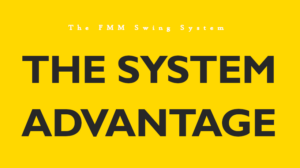
Golf Swing System Advantages – Building Confidence
What’s a Golf Swing System? If you’re into golf technique, you’ve probably heard the term “golf swing system” more than once. You’ve likely also been overwhelmed at some point by mechanical advice and stood…
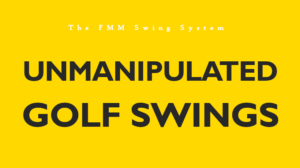
Unmanipulated Golf Swings = Your Natural Stock Shot
Unmanipulated Golf – the Holy Grail? If you know how to generate and accelerate power effortlessly, you’re on the verge of playing unmanipulated golf. One of the biggest advantages is developing a natural stock…

The Golf Swing Engine – What Truly Drives the Swing
What’s the Golf Swing Engine? What truly drives it? The answer depends on the swing system you follow. In the FMM Swing—rooted in the timeless motion of the old greats—the golf swing engine is…
Golf Development Consulting
I offer some services for you that are into golf technique and want some assistance.

Deep Analysis / Jungle Guiding – Golf Development Consulting
The Deep Analysis / Jungle Guiding is about dealing with information overload. One of the biggest problems with doing it yourself and “not going as deep as you need to” is that you start taking someone…

Show Stopper Analysis – Golf Development Consulting
The Show Stopper Analysis is for you that simply don’t know what’s going wrong. I don’t charge anything for this and perform my analysis round once a week. The Deep Analysis / Jungle Guiding is for…
General Article Collection Pages

DIY Swing Change – Advice on How to Successfully Change
Do It Yourself, DIY Swing Change, is what has driven me the last decade in my golf swing development. The absolute enjoyment of figuring out a swing change myself. To all of you out…
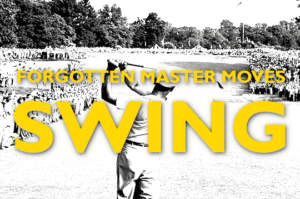
The FMM Swing – Reviving Old-School Secrets for Modern Golf
How do you produce powerful, controlled golf swings without using injury-inducing body angles? How can a golf swing be so simple that you could hit the ball blindfolded? A good golfer is often referred…

Golf’s Best Systems – Much Needed Golf Technique Context
I categorize golf motion styles into systems for the sake of clarity and understanding. No golfer fits perfectly into a single system, but without a structured framework, you’re essentially shooting in the dark. These…
Old School General Articles
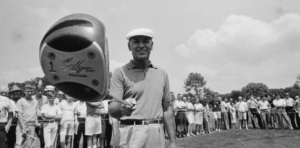
Ben Hogan Swing Rebuild – The Breakthrough That Changed Golf Forever
Nothing in golf quite compares to Hogan’s dominance in the 1940s and 1950s. The Ben Hogan swing rebuild, which he eventually shared through Five Lessons and other insights, shook the golf world—but without the…

The Death of the Swinging Motion – A Resurrection Possible?
If you’ve read my golf’s greatest swingers article you see that I highlight changes to the golf swinging motion happening roughly between 1970-1990s. You could basically call this the death of the swinging motion….
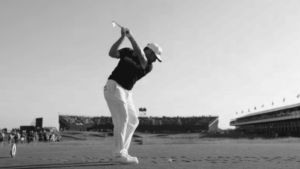
Old School Swinging Elements on Tour – A Modern Case Study
Modern top tier golfers definitely display old school swinging elements of the old greats. These swing styles are making their way back to the leaderboards today. How to spot Old School Swinging Elements? Once…